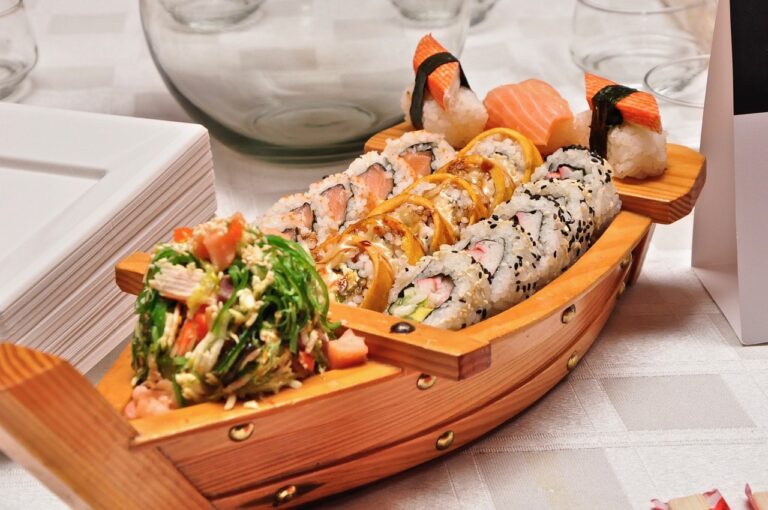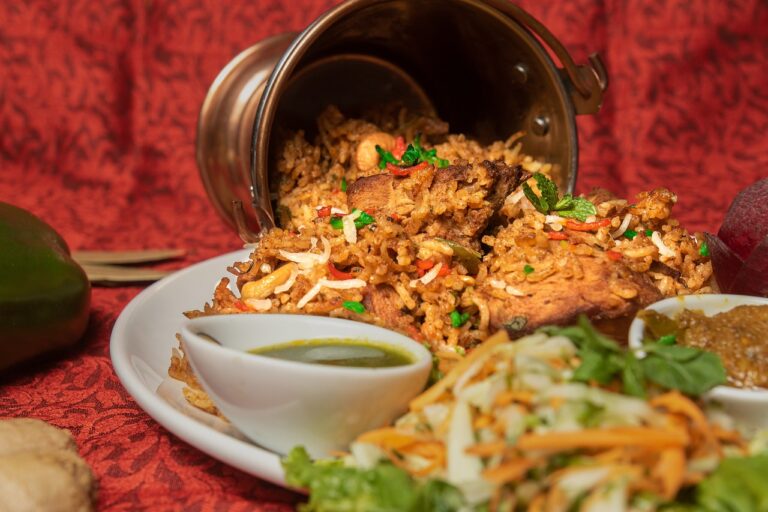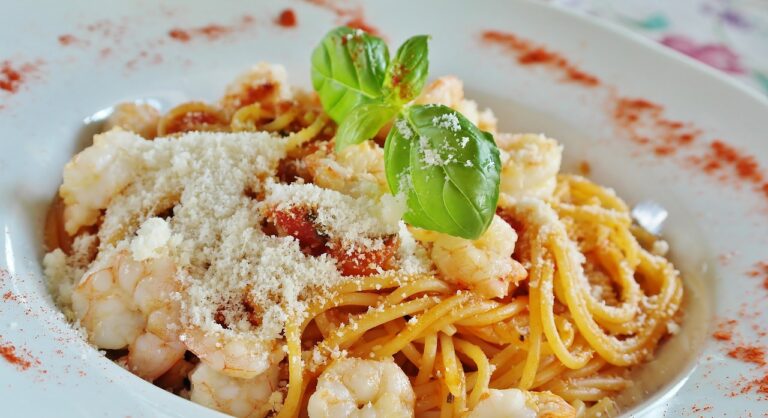Croissant Chronicles: From French Origins to Global Obsession
In the world of culinary delights, few pastries can match the elegance, simplicity, and buttery goodness of a croissant. Born in the heart of France, the croissant is not just a delectable treat; it’s a cultural icon that has traversed borders and captured hearts worldwide. Join us as we embark on a delightful journey through the layers of history, artistry, and international fascination that make up the story of the croissant.
The Birth of the Croissant
To comprehend the captivating journey of the croissant, we must first turn back the hands of time to 17th-century Vienna, where the origins of this iconic pastry remain shrouded in legend. The name “croissant” itself carries a clue to its birth, derived from the French word “croître,” meaning “to grow” or “to rise.” Yet, its true heritage is intertwined with a tale of triumphant creativity and a sprinkle of historical romance.
In the late 17th century, the city of Vienna was under siege by the Ottoman Empire. In a serendipitous twist, bakers working in the city’s underground tunnels heard the enemy tunneling towards them and alerted the Viennese defenders, thwarting the invasion. In gratitude for their heroism, the bakers were permitted to establish shops above ground, where they introduced a pastry inspired by the crescent moon on the Ottoman flag. This pastry was the precursor to the modern croissant, known for its crescent shape and layers reminiscent of the folds in a Turkish turban. This pastry, known as the Kipferl, became a culinary sensation in Vienna, the seed from which the croissant would later grow.
The croissant’s journey didn’t stop in Vienna, though. Its full-flavored potential was unlocked in France, where bakers perfected the recipe, adding their own rich layers of butter and finesse. Over time, the croissant became a symbol of French elegance and savoir-faire, delighting taste buds and sparking an international obsession that continues to this day.
Croissant Takes France
The arrival of the croissant in France marked a pivotal turning point in the history of this delectable pastry. It was in the early 19th century when Austrian-born Marie Antoinette, Queen of France, introduced the Kipferl (a predecessor of the croissant) to the French court. As a symbol of her Austrian heritage, the Kipferl quickly captivated the French elite. However, it was the innovation of French bakers that transformed the Kipferl into the croissant we know today, layering it with decadent French butter to create a delicate yet rich pastry.
The croissant’s metamorphosis into a culinary sensation mirrored its rise to popularity within French culture and society. By the mid-19th century, croissants had become a breakfast staple in France, enjoyed with a hot cup of coffee. The light, flaky layers and buttery aroma made it an instant favorite among the French, and it soon found its place in the heart of French bakeries. As it became an integral part of daily life, the croissant’s significance transcended the breakfast table and became a symbol of French sophistication.
In the subsequent decades, the croissant took its place as a beloved icon of French culinary artistry. Its influence was not limited to France alone; it had already started to catch the eye of the world, establishing itself as a symbol of fine dining and the art of patisserie. With each bite, the croissant effortlessly encapsulated the essence of France, making it a cherished pastry both at home and abroad. Today, the croissant remains a testament to French culture, where its legacy continues to shine brightly in the world of culinary excellence.
Crafting the Perfect Croissant
Creating the perfect croissant is a true labor of love, a pursuit of culinary excellence that demands precision, patience, and an unwavering commitment to the craft. The journey begins with the finest of ingredients—high-quality flour, the freshest butter, yeast, salt, and a touch of sugar. These simple yet essential components are harmonized in a delicate dance of proportions and techniques.
The key to crafting the signature flaky layers that define a perfect croissant is the lamination process. This involves folding and rolling the dough repeatedly, sandwiching layers of butter in between. The dough is rolled out, folded, and chilled, then the process is repeated multiple times. This meticulous process creates hundreds of paper-thin layers within the pastry, which, when baked, give the croissant its exquisite, airy interior and golden, crisp exterior.
Baking the perfect croissant is an art in itself. The oven’s temperature and humidity must be carefully controlled to ensure that the layers rise and expand while the buttery core remains tender and moist. The result? A croissant that emerges from the oven with a tempting aroma and a glistening, golden-brown hue, inviting all senses to partake in its splendor.
The Croissant Evolution: Beyond Tradition and Around the Globe
The classic croissant, an emblem of French patisserie, has gracefully transcended its traditional boundaries, journeying to distant lands and adapting to suit diverse tastes and occasions. Its evolution showcases a world of delicious variations and innovations. From famous almond-filled delights to savory interpretations, croissants have evolved into a global phenomenon, each country adding its unique twist.
One such iconic variation hails from Italy: the Cornetto. A cousin of the classic croissant, the Cornetto boasts a delightful Italian flair. These croissants are often sweeter, filled with luscious creams, fruit preserves, or even hazelnut spread. They’re the ideal companion to a foamy cappuccino, embodying the Italian breakfast culture. In the United States, croissants have embraced the heartiness of the country’s culinary traditions, giving rise to the famous “cronut.” This pastry merges the croissant’s flakiness with the doughnut’s shape, resulting in a delectable, deep-fried creation that can be seen as a symbol of American ingenuity in the pastry world.
Beyond geographical borders, croissants have embraced a global flavor revolution. In South Korea, “Injeolmi croissants” infuse the pastry with the flavors of traditional Korean rice cakes, coated in a sweet, nutty soybean powder. In Japan, “anpan croissants” marry the French crescent with a Japanese staple – anko, a sweet red bean paste. The croissant’s evolution embodies its adaptability, embracing the rich cultural influences it encounters on its journey. It’s a global celebration of culinary diversity, where famous croissant variations from different corners of the world enchant our palates, all while maintaining the essence of the beloved, buttery core.
Croissant on the Menu
boulangeries and patisseries stand as the heart of croissant culture. These quintessential French bakeries are where the magic begins, where the art of crafting the perfect croissant is practiced daily, and where the irresistible aroma of freshly baked croissants fills the air. Stepping into these charming establishments is like entering a haven of culinary delights, a place where the world of pastries comes alive.
Beyond the breakfast table, croissants have found their way into the realm of gastronomy. These delicate, flaky pastries have evolved into versatile delights that grace lunch, dinner, and dessert menus across the globe. In the hands of innovative chefs, croissants become the canvas for culinary experimentation. From croissant sandwiches filled with gourmet ingredients to croissant bread pudding, they transcend the boundaries of the traditional to offer a world of flavors and textures.
The croissant, once a symbol of French breakfast, now stands as a global culinary icon, capturing hearts and appetites far and wide. Its journey from boulangeries and patisseries to diverse menus represents its adaptability and enduring allure. So whether you savor it as a buttery breakfast treat in a cozy French bakery or explore its myriad interpretations in fine dining, the croissant’s presence on the menu is a testament to its timeless charm and its unceasing journey through the world of cuisine.
The Allure of the Croissant
The croissant, a true masterpiece of culinary art, beckons with an irresistible allure that engages all the senses. It’s a multisensory delight, inviting you to immerse yourself in the aesthetics, aromas, and flavors that define this iconic pastry. At first glance, the croissant’s golden hue captivates the eye, setting the stage for the sensory journey that follows. As you take that first bite, the delicate layers melt in your mouth, offering a symphony of textures that few pastries can rival. And then there’s the aroma – the fragrance of a freshly baked croissant, filling the air with an enticing blend of buttery warmth and anticipation, making every bite an experience to savor.
But the croissant is more than just a pastry; it’s a cultural emblem that embodies the spirit of France. These crescent-shaped delights symbolize not only French culture but also elegance and the art of savoring life’s simple pleasures. In every bite, you taste a piece of French identity, a reminder of the country’s dedication to craftsmanship and the pursuit of gastronomic excellence. The croissant’s cultural symbolism extends far beyond its ingredients; it represents a way of life that values not just what is eaten but how it is savored. It’s a tribute to the French tradition of savoring every moment, be it at the breakfast table or in the quaint boulangeries that dot the charming streets of France.
Croissant in Pop Culture
From the silver screen to social media, croissants have carved out a special place in popular culture, transcending their humble pastry origins to become iconic symbols of romance, sophistication, and indulgence. These buttery crescents have been cast in various cinematic scenes, embodying moments of love and elegance. Who can forget the classic movie trope of a romantic breakfast scene, complete with fresh croissants, offering a tantalizing backdrop to budding love stories? Croissants have seamlessly integrated into the narrative of life’s special moments, reflecting their universal appeal.
In the age of social media, croissants have undergone a transformation from a delectable treat to a photogenic sensation. Instagram feeds abound with images of croissants, each unique twist or filling attracting droves of online admirers. The hashtag #croissant, accompanied by mouthwatering photos, is a testament to their popularity in the digital era. Innovative bakers have taken the stage, pushing the boundaries of croissant creations to capture the imagination of online audiences. The croissant, once a humble pastry, has become a star in its own right in the culinary world, making its mark in the virtual realm as a trending sensation.
Croissant Appreciation
Croissant appreciation is not limited to savoring the delectable pastry alone, it’s a global passion, a journey of culinary exploration that takes enthusiasts to the heart of croissant culture. Embarking on a worldwide tour of destinations cherished by croissant connoisseurs is a delightful pursuit. From the famed patisseries of Paris, where the croissant’s essence was born, to hidden gems in cities around the globe, each stop promises a unique croissant experience that tells a story of tradition and innovation.
But croissant love doesn’t stop at indulgence. It’s a hands-on affair that invites aspiring bakers to roll up their sleeves and learn the craft. Workshops and classes dedicated to mastering the art of croissant-making have gained momentum. These experiences offer a deep dive into the techniques, secrets, and nuances that transform ordinary ingredients into the extraordinary. Joining the ranks of passionate bakers, participants discover the joy of creating perfect croissants and gain an appreciation for the meticulous process behind these buttery delights.
The journey of croissant appreciation is one of exploration, learning, and an ever-growing passion for a pastry that transcends borders. It’s a shared love for an iconic delight that brings people together, whether they are embarking on a global croissant pilgrimage or attending workshops to uncover the secrets behind its creation. Croissants are more than just pastries; they are a global symbol of culinary delight and an art to be cherished and shared.
The Croissant Experience
When it comes to the croissant experience, a world of delightful choices awaits, from the charming neighborhood patisseries to the haute cuisine establishments. Whether you seek the comforting embrace of a classic croissant or a gastronomic journey into innovation, here are a few remarkable patisseries that cater to a range of preferences and budgets:
1. Charming Corner Patisserie: Nestled on a cobblestone street, this corner patisserie exudes a cozy, neighborhood charm. Here, the simple pleasure of a classic croissant reigns supreme. The buttery, flaky layers are a testament to the uncompromising dedication of the local bakers. It’s the ideal spot to start your day with a warm croissant and a cup of coffee, all while savoring the atmosphere of a quintessential French neighborhood.
2. Parisian Icon: For those seeking an iconic croissant experience, there’s a revered Parisian patisserie that commands attention. Frequented by locals and tourists alike, this establishment’s croissants are works of art. The layers are impossibly delicate, and the buttery aroma that wafts through the air is nothing short of intoxicating. Pair your croissant with a selection of fine French pastries for the ultimate indulgence.
3. Michelin-Starred Sensation: For the epicureans in search of a croissant experience like no other, there’s a Michelin-starred restaurant that has redefined the art of croissant-making. Here, the croissant is elevated to a culinary masterpiece, often served as part of an exquisite breakfast or brunch offering. The innovation in flavors and textures is nothing short of extraordinary, and each bite is a journey through taste and tradition.
4. Gourmet Gastronomy: If you’re ready to embrace a gastronomic adventure centered around the croissant, there’s a high-end boulangerie-patisserie that will take you on an unforgettable journey. These croissants are more than pastries; they are creations, blending the finest ingredients and meticulous craftsmanship. Some of them are even made with rare, gourmet butter, elevating the experience to an entirely new level.
In the world of croissants, there’s a place for every palate and budget. Whether you’re strolling through a picturesque neighborhood or indulging in the extravagance of a Michelin-starred meal, the croissant experience is a quintessential part of French culinary heritage, inviting all to savor its many dimensions.
FAQs about Croissants
- What is the story behind the crescent shape of croissants?
Uncover the origin of the iconic crescent shape and its connection to historical events. - How do bakers achieve the delicate layers in a croissant?
Learn the art of lamination, a process that creates the signature flaky texture of croissants. - Are there gluten-free or vegan croissant options available?
Discover how bakers are adapting to dietary preferences, crafting croissants that cater to various needs. - What are some unique global croissant variations?
Travel the world through croissants, exploring unique flavors and fillings that reflect regional cuisines. - How has the croissant influenced pastry culture beyond France?
Explore the global impact of croissants on pastry-making traditions and culinary landscapes.
Summary
In the realm of culinary delights, the croissant is a universal symbol of mastery, bridging the simple and the sublime. From cozy neighborhood patisseries to revered Parisian icons, the croissant experience caters to every palate. Its captivating aroma, delicate layers, and golden hue make each bite an immersion into a world of senses, embodying French elegance and the celebration of life’s simple pleasures. As you savor your next croissant, take a moment to relish the experience it offers – an allure that has charmed the world for generations.
-

Road Trip Cuisine: Best Snacks and Meals on the Go
-

Pamukkale Hot Springs: Experience Turkey’s Spectacular Natural Baths
-

Rome’s Roman Colosseum: A Journey Through History








